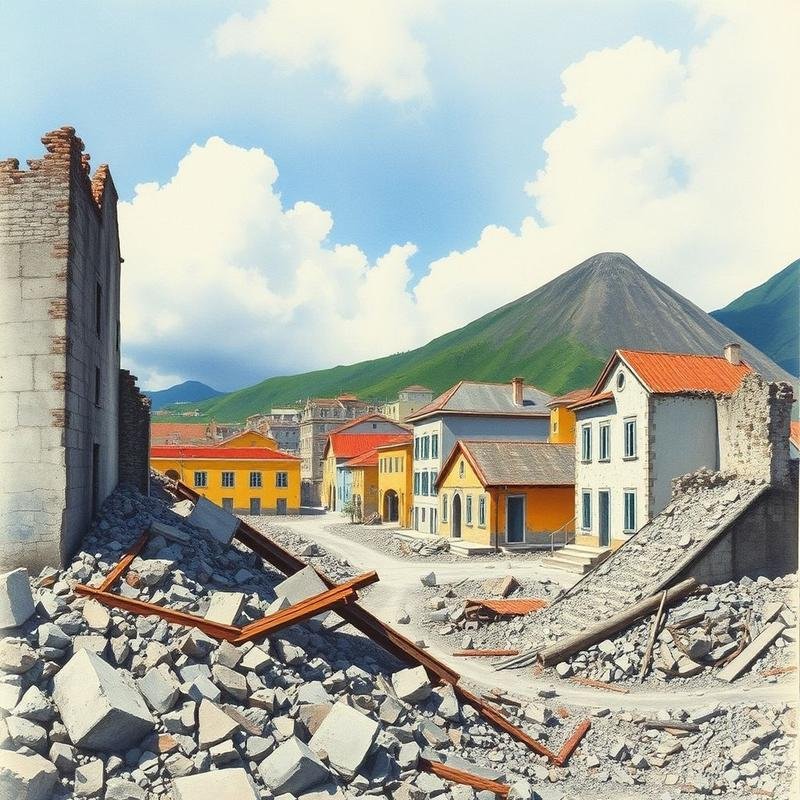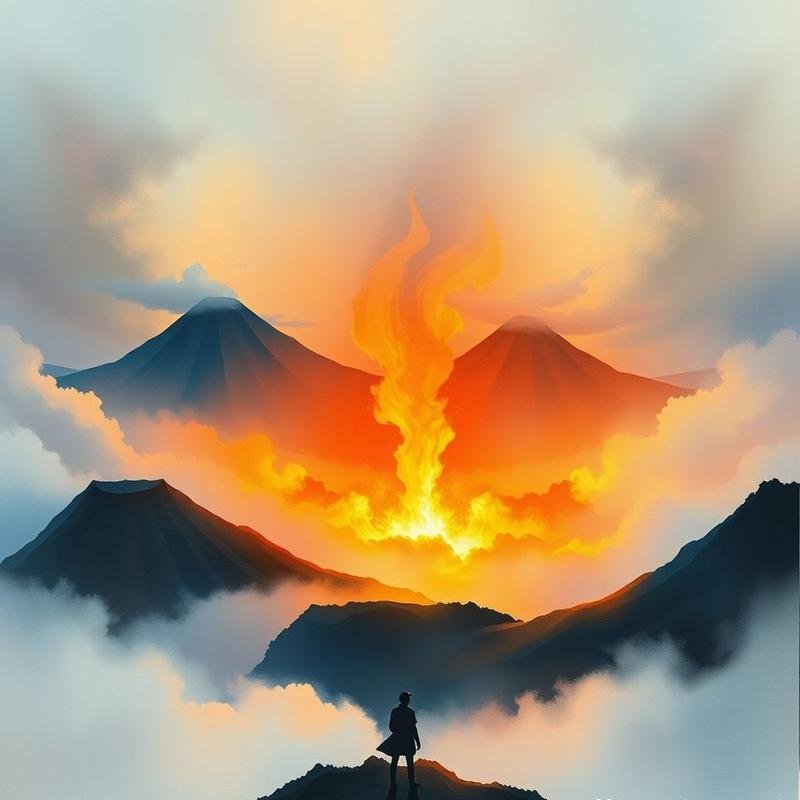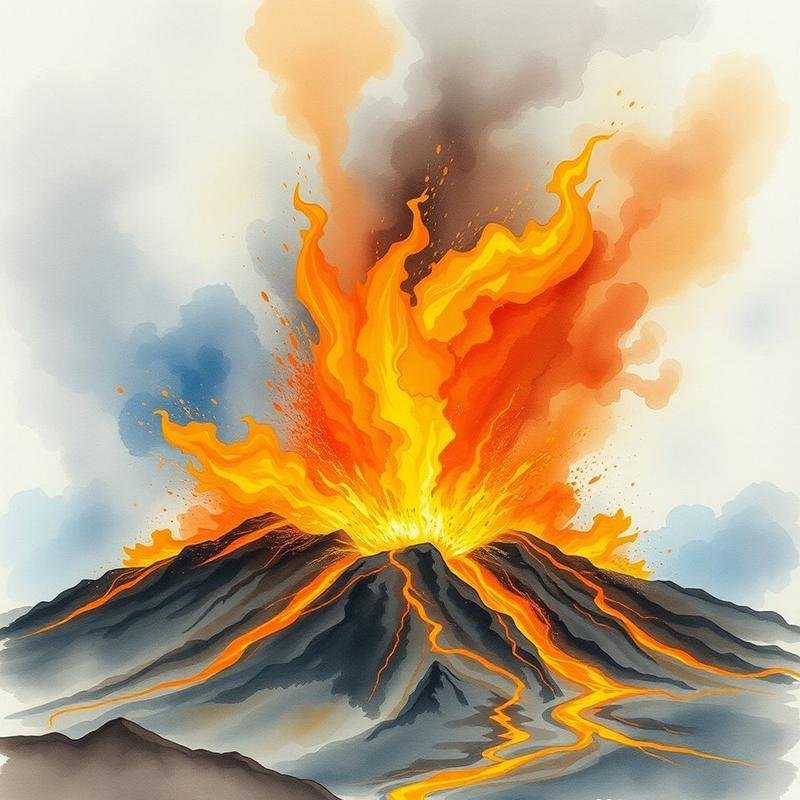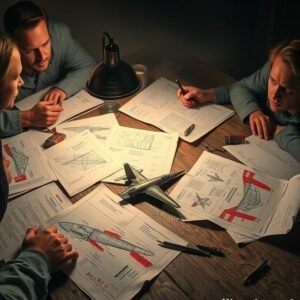Most Terrifying Volcanoes: Could You Survive the Lava?

Hazardous Volcanoes: Lava Flow Survivability
In a world where the forces of nature oscillate between creation and destruction, volcanoes stand as dormant giants, harboring the potential to reshape the Earth in an instant. Can humanity withstand this latent power? A critical exploration begins now, traversing landscapes scarred by eruptive events, examining historical narratives, and analyzing scientific data that reveals the relentless force at play. This journey focuses on the Ring of Fire, the circum-Pacific region where tectonic plates converge in a dynamic and often destructive interaction. This zone accounts for over 75% of the world’s volcanic activity. Within this volatile belt reside some of the most hazardous volcanoes on Earth, capable of triggering catastrophic climate shifts and devastating populated areas.
Mount Merapi: Indonesia’s Fiery Giant
One such perilous volcano is Mount Merapi in Indonesia. Its name, translating to “Mountain of Fire,” overlooks the densely populated city of Yogyakarta. Merapi’s history is punctuated by devastating eruptions, including the 1930 event that claimed over 1,300 lives. Merapi is not merely a volcano; it is a geologically active threat requiring constant vigilance.
Mount Vesuvius: A Historical Cataclysm
Moving to Italy, Mount Vesuvius dominates the Bay of Naples, looming over the ancient city of Pompeii, entombed in volcanic ash. The eruption of Vesuvius in 79 AD unleashed immense energy, burying Pompeii and Herculaneum under layers of ash and pumice. This cataclysm transformed the cities into preserved historical sites, narrating a powerful story of nature’s destructive capacity. Vesuvius remains active, and scientists are diligently monitoring its activity to anticipate future eruptions.
Taal Volcano: Beauty and Danger in the Philippines
In the Philippines, Taal Volcano presents a complex geological formation, featuring a crater lake, an island within the lake, and a crater within the island. Taal exemplifies the intricate processes of volcanism and nature’s ability to create unique landscapes. However, Taal’s beauty belies an inherent danger. The unexpected eruption in 2020 ejected a volcanic plume reaching 15 kilometers in altitude, necessitating the evacuation of tens of thousands of residents.
The Volcanic Explosivity Index (VEI)
The Volcanic Explosivity Index (VEI) provides a standardized method for quantifying the magnitude of volcanic eruptions. This logarithmic scale, ranging from 0 to 8, measures the volume of ejected material, the height of the eruption column, and the duration of the event. A VEI 8 eruption, exemplified by Mount Tambora in 1815, can induce global climate anomalies, leading to periods of cold and drought. The Tambora eruption resulted in the “Year Without a Summer” in 1816, characterized by drastically reduced temperatures and widespread crop failures.
Pyroclastic Flows: Nature’s Incinerator
Pyroclastic flows, also known as nuées ardentes, represent one of the most lethal volcanic phenomena. These flows consist of a superheated mixture of gases, ash, and rock, traveling at speeds reaching hundreds of kilometers per hour, incinerating all in their path. The city of Saint-Pierre, Martinique, was completely destroyed in 1902 by a pyroclastic flow from Mount Pelée, resulting in approximately 30,000 fatalities.
Lahars: Volcanic Mudflows
Volcanic mudflows, or lahars, are another destructive consequence of volcanic activity. Lahars form when volcanic ash and water combine, either from heavy precipitation or glacial melt, creating a slurry of mud and rock that can inundate and destroy entire regions. The 1985 eruption of Nevado del Ruiz in Colombia triggered an avalanche, leading to a lahar that devastated the city of Armero, resulting in over 25,000 deaths.
Monitoring and Prediction
Scientists employ a range of monitoring techniques to assess the activity of potentially hazardous volcanoes. These include seismic monitoring, gas analysis, and ground deformation measurements. Seismometers detect subtle tremors preceding eruptions, while gas analyzers measure the concentration of sulfur dioxide and other volcanic gases. Increased gas emissions can indicate an impending eruption. Satellite-based monitoring provides valuable data on surface temperatures, deformation patterns, and the dispersion of volcanic ash. This comprehensive data set enhances scientists’ understanding of volcanic behavior and improves eruption forecasting capabilities.
The Challenge of Prediction and Preparedness
Despite advancements in monitoring technology, accurate prediction of volcanic eruptions remains a significant challenge. Volcanoes are complex systems exhibiting unpredictable behavior, and eruptions can occur with little or no warning. Consequently, communities residing near active volcanoes must maintain a state of preparedness and implement effective evacuation protocols.
Volcanoes in Culture and Mythology
Indigenous cultures often incorporate volcanoes into their mythology, portraying them as deities demanding appeasement through sacrifices and offerings. These myths reflect a profound understanding of the destructive potential of volcanoes and their impact on human lives. In Hawaiian mythology, Pele, the goddess of volcanoes, embodies both creative and destructive forces.
Volcanoes and Climate Change
Today, we stand at the cusp of an era defined by accelerating climate change, which may influence volcanic activity. Glacial retreat can reduce the confining pressure on certain volcanoes, potentially increasing the likelihood of eruptions. Conversely, rising sea levels may exacerbate the risk of lahar formation.
Coexisting with Volcanoes
Volcanoes are not solely a threat; they are integral components of our planet’s ecosystem. Volcanic activity contributes to soil fertility, atmospheric formation, and geothermal energy production. Humanity must learn to coexist with volcanoes, respect their power, and prepare for the challenges they present. While fear can be paralyzing, knowledge is a powerful tool. By understanding the forces of nature, we can better protect ourselves and our communities.
Join the Exploration
This exploration of our planet’s dynamic processes is just the beginning. Join us on future expeditions as we uncover more of Earth’s secrets and share our passion for science and discovery. Subscribe to our channel and enable notifications to be part of this ongoing journey.








